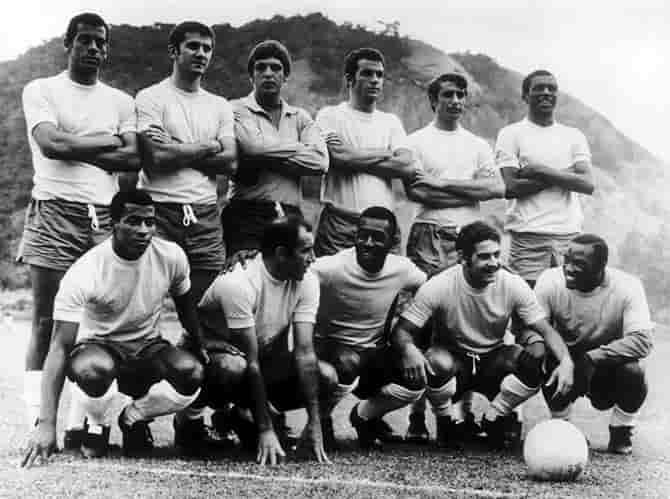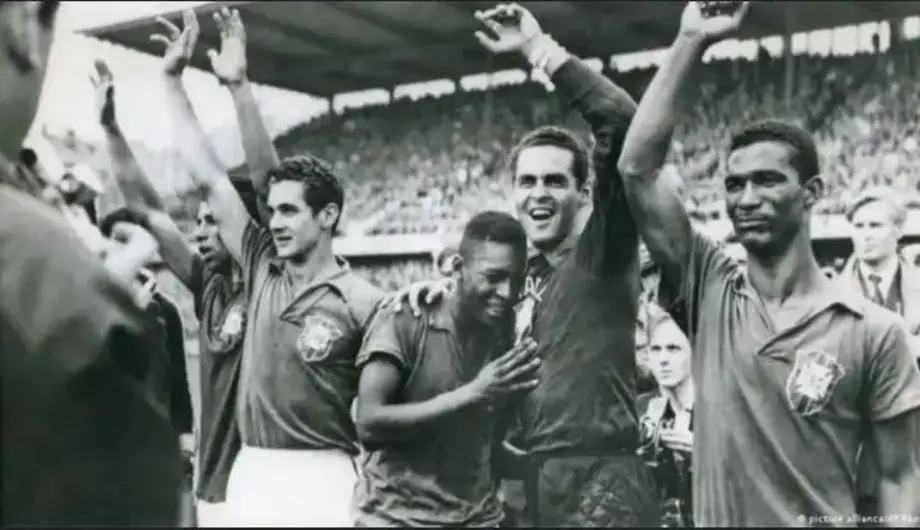Introduction: The History of Football in Brazil
Those who watch football games in Brazil and in the world today certainly think that, because of the skills of the black and afro-descendant players, the first ball that arrived here was kicked by a fellow human being. In this post we will make a summary about the History of Football in Brazil.
Did Football Start in Brazil?
You might even think that football emerged in Brazil, given the history of great players we had, especially in the glorious years of the 20th century. But, as you will see in this post, the history of football in Brazil was not quite like that.
Who brought football to Brazil?
There is no contradiction when it is stated that the person responsible for introducing this sport in Brazil was a Brazilian named Charles William Miller, the son of a Scottish father and a Brazilian mother of British descent.
From Cricket to Football
At the end of the 19th century, before Miller introduced us to the latest sport, the game of cricket, also of English origin, was common. But in 1894, the country met what would become its main sport: football.
Curiosities about Charles Miller
Charles Miller is a very well known name to São Paulo fans, as it was he who founded the São Paulo Athletic Club in mid-1894, when several sports clubs dedicated to this sport began to emerge. But it was only in 1930 that the football team was created.
How Football arrived in Brazil
Miller learned all about football while studying in Southampton and was part of the athletic team at Bannister Court School. He was a player, a referee, and even a manager, which made him one of the biggest enthusiasts of the sport at the time.
So, back in Brazil, Miller brought the novelty, well accepted by the São Paulo community. But not everyone could be a football player, since the country was still moving slowly in its post-abolition process.

Blacks were forbidden to play football
Yes, Brazil still lived in the shadow of slavery and was a country where racism was strong enough to determine what a black or an Indian person could or could not do.
In the beginning Football was an elitist sport
The “official” games, especially, were only allowed for people connected to the aristocracy, the rich bourgeoisie, and who were not dark-skinned. If this happened, it was in the hidden corners of the peripheries.
The Blacks in Brazilian Football
Only after 1920 did blacks start to integrate some football teams, with emphasis on Vasco, which joined unofficial teams from Rio de Janeiro’s suburbs in order to enable the inclusion of low-income people in the sport.
The first football teams in Brazil
In the first decades of the 20th century the major football clubs began to emerge:
-
América Mineiro (1912)
-
Avaí (1923)
-
Corinthians (1910)
Conheça Nossos Materiais
-
Cruzeiro (1921)
-
Flamengo (1912)
-
Grêmio (1904)
-
São Paulo (1930)
-
Vasco (1915).
However, the two oldest football teams in Brazil still active are Sport Club Rio Grande, founded in 1899 under the name Sport Club Germânia, and Ponte Preta (AAPP), founded in 1900.
The Brazilian National Football Team’s First Match
1914 is considered the “official year” of the first match of the Brazilian National Team, which beat Argentina in the Copa Roca, in a friendly and unique match held in the neighboring country. The Copa Roca had its last edition in 1970, when it was replaced by the Superclásico das Américas.
That was also the year when the institution that would henceforth be the administrator of the Brazilian National Team, the Brazilian Sports Federation (BSF), today known as the Brazilian Football Confederation (BFC), was created.
The first Brazilian president to encourage the practice of football was Getúlio Vargas, already in his first phase of government, which began in 1930. It was from this time on that the sport began to gain strength and public.
How did Football develop in Brazil?
The incentive of the Getúlio Vargas government (1930-1945), which gave unrestricted support to the sport, cannot be discounted, but mainly due to the growing interest of Brazilians in playing football.
With the incessant emergence of new sports clubs and the introduction of football, as their main activity, the sport has been gaining new fans.
The stadiums began to gain a certain glamour, with the presence of entire families interested in watching the spectacles produced by the players, who dribbled each other with the ball on the field, in an attempt to score a goal.
The First World Cup in Brazil
In 1950, Brazilians had the chance to watch at home what would become the most important football championship in the world, the World Cup. Despite the disappointment with the victorious final against Uruguay, Brazil would become one of the best teams in the world.
From then on, with determined regulations and fundamentals, Brazilian football gained notoriety and strength, not only here, but also in the rest of the world.
Today, the Brazilian National Team is the only one that holds the title of World Cup Five-Time Champion, having participated in 21 editions and never having missed out on a single one.

 Material de Educação Física
Material de Educação Física